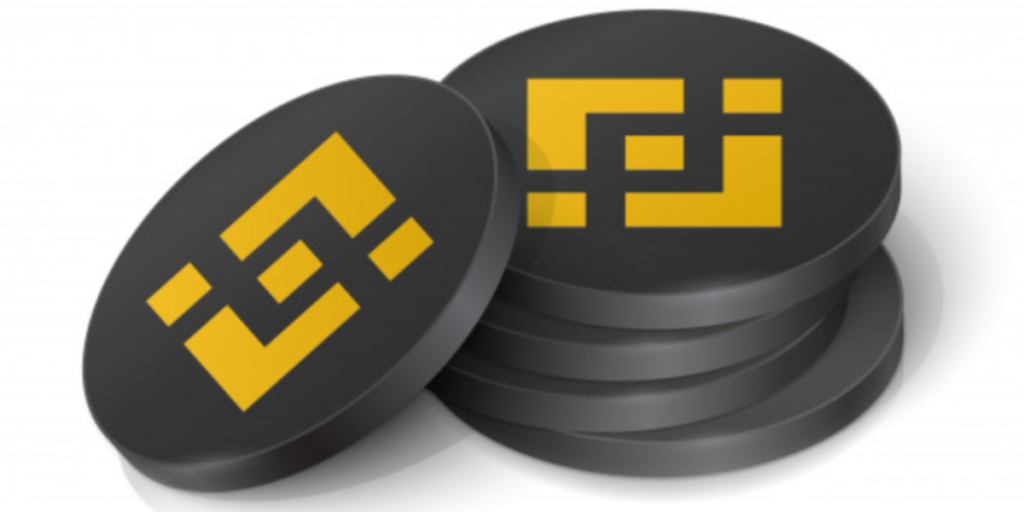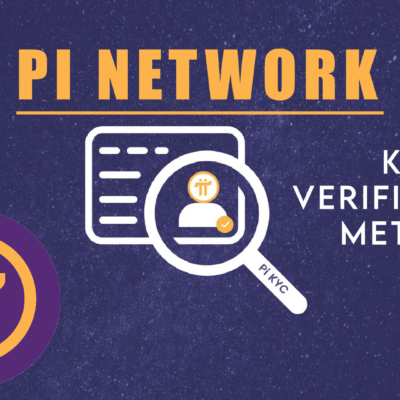Navigating the vast landscape of cryptocurrencies, from Bitcoin and Ethereum to Dogecoin and Tether, can be overwhelming for beginners in the crypto world. To provide some guidance, here are the top 10 cryptocurrencies that show potential for investment based on their market capitalization—the collective value of all coins currently in circulation.
What Are Cryptocurrencies?
Cryptocurrencies are digital assets built on blockchain technology, operating without the need for a central authority such as a bank or government. With a staggering 24,630 cryptocurrency projects in existence, the cryptocurrency market is projected to reach a substantial $4.94 billion by 2030.
1. Bitcoin (BTC)
- Market cap: Over $550 billion
Bitcoin (BTC), created in 2009 by an individual using the pseudonym Satoshi Nakamoto, stands as the original and pioneering cryptocurrency. Like other cryptocurrencies, BTC operates on a decentralized network of computers, utilizing a blockchain—a distributed ledger that records transactions. The security of Bitcoin is ensured through the verification of ledger additions via a process known as proof of work, where cryptographic puzzles must be solved, thus safeguarding it against fraudulent activities.
Over time, Bitcoin has gained significant prominence and its price has experienced a remarkable surge. In May 2016, the value of Bitcoin was approximately $500. Since then, Bitcoin has encountered various fluctuations but has demonstrated remarkable resilience. In the previous year, Bitcoin underwent a 65% market value decline. As of May 3, 2023, Bitcoin is currently trading within the range of $28,000 to $29,000.
2. Ethereum (ETH)
- Market cap: Over $ 220 billion
Ethereum, both a cryptocurrency and a blockchain platform, has garnered significant popularity among developers due to its vast potential for various applications. This includes features such as smart contracts, which execute automatically when predefined conditions are met, and non-fungible tokens (NFTs).
The growth of Ethereum has been nothing short of remarkable. Between April 2016 and the beginning of March 2022, its price surged from approximately $11 to over $3,000, marking an astounding increase of more than 27,000%. However, in the wake of an overall market crash, Ethereum experienced a sharp decline, hitting a yearly low of $1,091 on November 9, 2022. Nevertheless, it rebounded swiftly and currently stands at nearly $1,800 as of May 3, 2023.
3. Tether (USDT)
- Market cap: Over $80 billion
Diverging from certain other types of cryptocurrencies, Tether belongs to the category of stablecoins. This classification signifies that Tether is backed by fiat currencies such as the U.S. dollar and the Euro, aiming to maintain a value equivalent to one of those denominations. The intention behind this design is to provide Tether with a more consistent value compared to other cryptocurrencies, thereby appealing to investors who seek stability amidst the inherent volatility prevalent in the crypto market.
4. Binance Coin (BNB)
- Market cap: Over $50 billion
Binance Coin (BNB) is a cryptocurrency that serves multiple purposes within the Binance ecosystem, one of the largest cryptocurrency exchanges globally. Originally introduced in 2017 primarily for facilitating trades on the Binance exchange, Binance Coin has since evolved to offer broader functionality. It can now be utilized for trading purposes, processing payments, and even making travel bookings. Furthermore, BNB can be traded or exchanged for other cryptocurrencies like Ethereum or Bitcoin.

In 2017, the price of Binance Coin was a mere $0.10. By the beginning of March 2022, it had surged to approximately $413, representing an impressive gain of around 410,000%. Despite experiencing a significant market crash, BNB remained relatively resilient and is currently trading near the $320 range as of May 3, 2023.
5. XRP (XRP)
- Market cap: Over $23 billion
XRP, a cryptocurrency created by some of the founders of Ripple, a digital technology and payment processing company, is specifically designed to enable efficient currency exchanges within the Ripple network. It serves as a medium for facilitating transactions involving various currency types, including fiat currencies and major cryptocurrencies.
In early 2017, the price of XRP stood at $0.006. As of May 3, 2023, it has surged to approximately $0.46, marking a remarkable increase of over 6,000%.
6. Cardano (ADA)
- Market cap: Over $13.4 billion
Entering the cryptocurrency scene at a slightly later stage, Cardano stands out for its early adoption of proof-of-stake validation. This approach accelerates transaction processing time while reducing energy consumption and environmental impact by eliminating the competitive problem-solving element found in platforms like Bitcoin. Similar to Ethereum, Cardano facilitates smart contracts and decentralized applications, with its native coin called ADA serving as the driving force behind these functionalities.
Compared to other prominent cryptocurrencies, ADA’s growth has been relatively modest. In 2017, the price of ADA was $0.02. As of May 3, 2023, it has reached $0.38, representing an increase of nearly 1500%.
7. Solana (SOL)
- Market cap: Over $8 billion
Solana was specifically developed to support and enhance decentralized finance (DeFi) applications, decentralized apps (DApps), and smart contracts. Its underlying infrastructure relies on a unique hybrid mechanism combining proof-of-stake and proof-of-history, enabling Solana to process transactions swiftly and securely. At the core of the Solana ecosystem lies its native token, SOL, which fuels the platform’s operations.
Upon its launch in 2020, SOL debuted with a price of $0.77. By March 1, 2022, its value had surged to approximately $101, reflecting a remarkable gain of nearly 13,000%. As of May 3, 2023, SOL is currently trading at around $21.
8. Polkadot (DOT)
- Market Cap: Over $8.9 billion
Founded in 2016, Polkadot (DOT) stands out as a distinctive blockchain interoperability protocol that aims to connect different chains together. Its primary objective is to facilitate the seamless exchange of data and transaction processing for parachains, which are parallel blockchains, without compromising security. Developers have the flexibility to create their own blockchains while leveraging the security provided by Polkadot.
Polkadot was created by Gavin Wood, a core founder of Ethereum. One intriguing aspect of DOT is that it does not have a hard limit on its total supply. Instead, new tokens are continually circulated.
The price of Polkadot reached its peak in May 2020, reaching $6.30. Subsequently, in May 2021, it reached an all-time high of $55.11 before experiencing a decline to nearly $4 in December 2022. As of May 3, 2023, the price of Polkadot stands at $0.97.
9. Litecoin (LTC)
- Market Cap: Over $6 billion
Litecoin (LTC) is an open-source blockchain project that was launched in 2011. It was created by Charlie Lee, a former software engineer at the cryptocurrency exchange Coinbase. Being one of the early cryptocurrencies, Litecoin’s code is derived from Bitcoin’s codebase. While it shares similarities with Bitcoin, Litecoin is designed to offer faster transaction confirmation times. It serves as a decentralized payment option, enabling people to transact globally without the need for intermediaries. Often referred to as the “silver to Bitcoin’s gold,” Litecoin is considered a prominent cryptocurrency in its own right.
Litecoin has a maximum supply of 84 million tokens. In May 2021, it reached its all-time high of $413.47; however, it experienced a subsequent decline of over 50%. Litecoin is accepted by a growing number of merchants, and it currently holds a per-token value of approximately $87, ranking as the 11th-largest cryptocurrency in the world.
10. Avalanche (AVAX)
- Market Cap: Over $5.5 Billion
AVAX serves as the native token of the Avalanche blockchain, a platform renowned for its support of smart contract functionality. Operating on a Proof of Stake (PoS) mechanism, Avalanche has gained recognition as one of the fastest and most reliable smart contract platforms in the realm of decentralized finance (DeFi). Similar to Ethereum, it enables the execution of smart contracts and the development of decentralized applications, utilizing the Solidity programming language, which is also employed by Ethereum.
The total supply of AVAX tokens on the Avalanche network is limited to 720 million. Half of these tokens were created and distributed during the platform’s launch in 2020, while the remaining tokens will be generated through the minting process as staking rewards. Notably, Avalanche distinguishes itself from Bitcoin and Ethereum by burning all transaction fees, thereby enhancing the scarcity of AVAX tokens.
During its launch in September 2020, AVAX was priced at approximately $4.00. The token reached its peak value of $134.87 on November 23, 2021. As of May 3, 2023, AVAX is currently trading at levels near $16.7.









